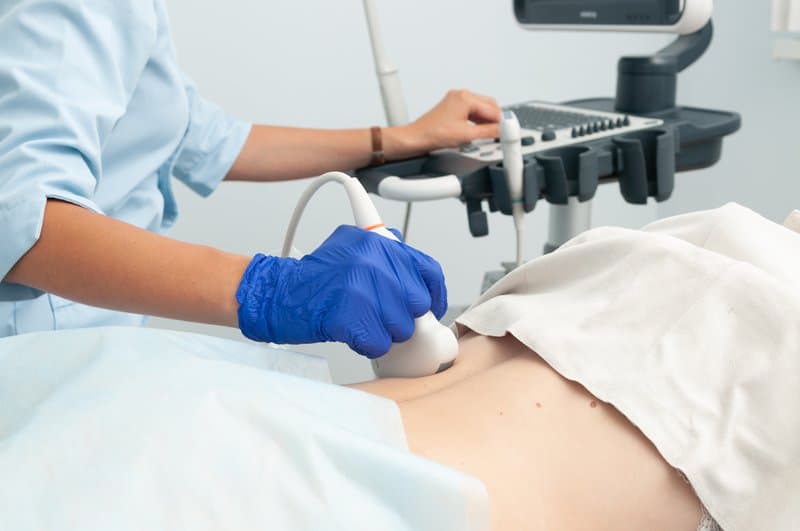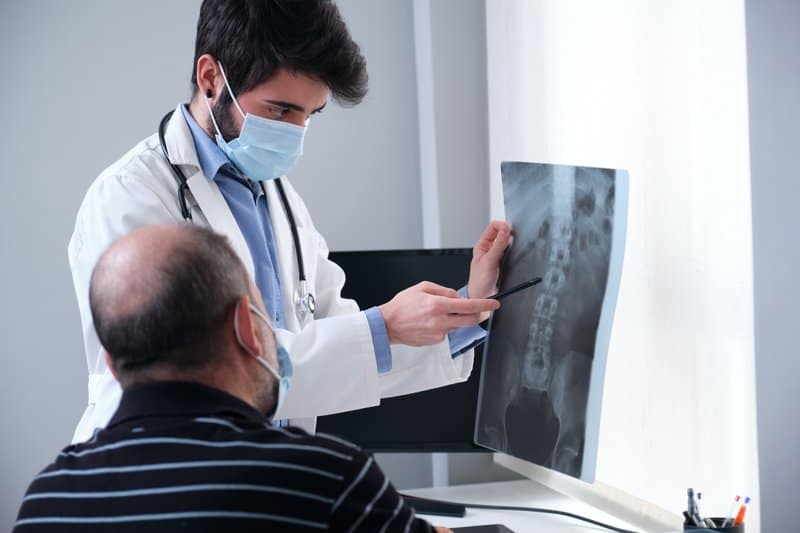The lower back or lumbar spine is a complex structure of interconnecting bones, joints, nerves, ligaments, and muscles working together to provide support, strength, and flexibility. It’s an integral part of the spine and supports the weight of the upper body. It also enables mobility for everyday motions like bending, twisting, and flexing the hips when walking. When diagnosing lower back pain, these are the things your specialist will take into consideration.
You can sprain ligaments, strain muscles, rupture disks, and irritate joints—all of which can lead to back pain. While sports injuries or accidents are big triggers for back pain, sometimes even the simplest of movements—picking up something from the floor, for example—can trigger painful episodes. In addition, arthritis, poor posture, obesity, and pregnancy can cause or complicate back pain.
Obtaining an accurate diagnosis of the underlying cause of the pain is vitally important in guiding treatment as it identifies the root cause of the pain, rather than just treating the symptoms.
In this article, we will discuss five mistakes commonly made when diagnosing lower back pain — a condition which costs Americans at least $50 billion in health care costs each year. Add in lost wages and lowered productivity, and that figure easily rockets well beyond that.
Patient History
The first step in offering an accurate diagnosis is to obtain sufficient information from the patient about their symptoms. A detailed medical history helps identify risk factors associated with developing future episodes of lower back pain so that these triggers can be avoided.
Important questions to ask include: How long has it been hurting? Is the pain more severe at certain times of day, such as waking up or after some activity? How many hours of sleep does the patient get? What sleep position is preferred? Does anything make it better or worse? Has the person had any recent injuries or is there a past injury that might be relevant now?
The more detailed the answers to these types of questions, the greater chance of an accurate diagnosis. More information provides doctors with a more comprehensive perspective on the patient’s health and offers more specific possibilities for diagnosing low back pain. The clues in a patient’s medical history help physicians develop a correct diagnosis.
Relying On Physical Examination Alone When Diagnosing Lower Back Pain

A physical exam will help narrow down possible causes for your chronic lower back pain by identifying any anatomical abnormalities such as herniated discs or spinal stenosis.
A typical physical for low back pain could include a combination of a few steps.
Palpation – A hands-on inspection of the affected area to check for muscle spasms, tightness, areas of tenderness, or joint abnormalities.
Motion tests – Physicians monitor mobility and alignment of the involved joints. The patient may be asked to bend or twist in certain positions to determine which worsen or recreate pain and to see if certain movements are limited by discomfort.
Reflex tests – To evaluate weakened reflexes and decreased muscle strength. If reflexes are diminished, a nerve root might not be responding as it should.
Leg raise test – The patient is asked to lay on the back and raise one leg as high and as straight as possible. If a raised leg induces low back pain, a herniated disc might be suspected.
Neurological examination – This tests muscle strength, skin sensation, reflexes, and cranial nerves and serves to detect abnormalities in sensation, motor function, and coordination.
Segmental examination – To check each spinal segment for proper motion.
It’s also essential to carry out an assessment of the nearby joints and areas that could be masquerading as back pain or contributing to it—such as the hip or the sacroiliac joint. Many physicians, however, rely solely on palpation to make a diagnosis. While certainly useful, palpating does not provide all the data needed to arrive at an accurate diagnosis. For example, if the physician only feels tenderness over the spinous processes but fails to ask about numbness, tingling, weakness, loss of reflexes, or difficulty walking, they might miss some key pointers.
Oftentimes, primary care physicians have limited detail about back pain which is why most primary care doctors will refer patients to a pain management specialist like Midsouth Pain Treatment Center.
In addition, even though a primary care doctor may feel tightness around the sacroiliac joints, they may fail to note whether the patient complains of pain while sitting down or standing up. A physical may also reveal no abnormalities while undergoing motion testing, yet the patient still reports severe discomfort. The takeaway here is that only relying on a physical examination could lead to a patient being misdiagnosed.
Failing To Consider Other Possible Causes Of Lower Back Pain

Some common disorders which can mimic chronic low back pain include sciatica, facet arthropathy, osteoporotic compression fractures, infection, tumor, trauma, and inflammatory diseases.
Patients are often misdiagnosed because of a failure to consider these and other possible causes of lower back pain and are usually referred to another specialist like Midsouth Pain Treatment Center for a second opinion. It’s thus essential to rule out these before arriving at a definitive diagnosis.
Not Considering Alternative Treatments Before Referring Patients To Specialists
Doctors, very often, refer patients suffering from chronic back pain to pain management specialists like Midsouth Pain Treatment Center without first considering alternative and noninvasive treatments that could help alleviate their discomfort.
These include seeing an interventional pain management specialist like Midsouth Pain Treatment Center, exercise programs, heat therapy, acupuncture, chiropractic manipulation, and massage therapy. While self-care treatments generally do not require guidance from a doctor, it should be used carefully and sometimes requires expert advice.
For example, studies show that conservative approaches such as TENS and acupuncture are effective in relieving acute and subacute low back pain.
Interventional Pain Management Technology

Chronic lower back pain can be difficult to manage, and often requires a multi-faceted approach. The key to effective lower back treatment is obtaining an accurate diagnosis of the underlying cause. A misdiagnosis can make lower back pain more difficult to manage and may require you to go through multiple rounds of ineffective treatments before finally finding relief.
Our team at Midsouth Pain Treatment Center (MSP) provides expert diagnostic services in order to provide you with the most effective course of treatment possible for your unique condition – from acute or subacute episodes that only last a few days, to more persistent cases where discomfort persists over long periods of time. We do this by using the most advanced technology to address the source of your pain, and provide you with treatment so you can feel relief quickly.
The expert team at MSP understands that chronic pain is different for every patient. It is because of this philosophy that our medical providers take a completely individualized approach to crafting specific treatment plans for each patient. If you are among the 31 million Americans experiencing debilitating symptoms associated with lower back pain, schedule an appointment today.
What You Can Do Next
If you are experiencing pain, give us a call at (866) 707-1942 to schedule an appointment with a pain management specialist at Midsouth Pain. We are here to help you find the root cause of your pain and provide you with a plan of care and a roadmap to help you get your life back.
We look forward to speaking with you!





